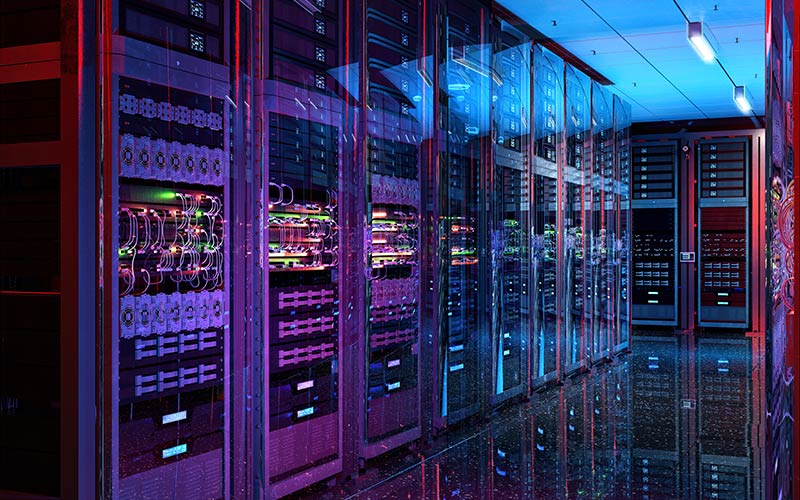Insights
- Without significant action, electricity usage in data centers could double by 2026 — an increase large enough to power Argentina.
- Infosys’s Generative AI Radar report found that large companies in North America, Europe, and the Asia-Pacific region plan to spend an additional $6 billion on generative AI this year — above and beyond what they were already spending.
- Immersion cooling involves submerging servers in specialized fluid to reduce the heat created by the electronics. However, this can require specialized hardware and also increase operational complexity through needs for regular fluid replacement and filtration.
- Immersion cooling can reduce thermal stress, lower total cost of ownership, advance sustainability goals, and increase space efficiency in data centers.
- In addition to lowering electricity consumption, immersion cooling can reduce water use by as much as 91%.
- The immersion cooling market was about $400 million in 2023 but is projected to increase to $2.1 billion by 2031.
The thirst for new tech solutions is pretty much unquenchable. Look no further than data centers: They are booming and show no signs of slowing down. In fact, one report estimates they'll grow by 10% annually through 2030. The downside? All this growth can lead to higher electricity costs and a much bigger environmental impact.
In the worst-case scenario, the amount of electricity that data centers use could double by 2026. That’s an additional 500-terawatt hours — enough to power all of Argentina. For data centers that don’t use renewable electricity, their success could lead to more greenhouse gas emissions and another loss in the fight against climate change.
This worst-case scenario is by definition not the most likely outcome. But it does highlight what is at stake with the massive growth in artificial intelligence (AI), cryptocurrency, and all the other technologies that are filling the clouds. Infosys’s Generative AI Radar surveyed business executives at large companies in North America, Europe, and the Asia-Pacific region. Companies there plan to spend an additional $6 billion on generative AI this year — above and beyond what they were already spending. Every dollar spent leads to more electricity used. And while cryptocurrency demand fluctuates based on price, electricity consumption for bitcoin has been close to an all-time high and could go higher. The US approval for bitcoin exchange-traded funds could increase demand for the most popular cryptocurrencies.
The growth of data centers could make it tough for some countries to stick to their commitments under the UN’s Paris Agreement. For example, data centers could end up using nearly 20% of Denmark’s electricity by 2026, according to the International Energy Agency. This would put significant pressure on the country as its leaders try to reduce greenhouse gas emissions by 70% — compared to 1990 levels — by 2030 and reach carbon neutrality by 2050.

Switching to emissions-free electricity is the most obvious solution to make data centers more sustainable. But there is not enough green power right now to handle the demand in every place that wants it or needs it. Data centers and their partners will have to innovate to make sure technology keeps advancing but also to prevent that worst-case scenario from happening. One important new solution is immersion cooling, or submerging servers in specialized fluid to reduce the heat created by the electronics. The equipment in data centers already generates a lot of heat, but that’s only getting worse because of the power-hungry graphics processing units and specialty chips needed for more powerful AI.
Even though it seems counterintuitive to mix electronics and liquid, immersion cooling offers real benefits to the operators of data centers and their clients. Here are some ways this approach makes sense:
- Reduce thermal stress — By preventing sudden temperature spikes, data center equipment lasts longer and is less likely to fail. The lower operating temperature can also lead to better performance.
- Lower total cost of ownership — The upfront costs are offset by the cost savings of air cooling, a significant expense for data centers. This also reduces the square footage needed for the large-scale air conditioning equipment. Shell, which now produces immersion cooling fluid and has partnered with Infosys on this effort, calculated that this strategy can reduce total cost of ownership by one-third.
- Advance sustainability goals — Less electricity used typically means a smaller carbon footprint and also a reduction in water usage by as much as 91%. The University of Texas at Austin’s Texas Advanced Computing Center partnered with GRC to use immersion cooling. The effort reduced the center’s carbon footprint by 40%.
- Increase space efficiency — Data centers can squeeze more computing power into a smaller space when they don’t need as much air-conditioning equipment. New centers can make more efficient use of their space, and existing data centers can squeeze more computing power into their existing buildings.
Even with these benefits, some data centers and other companies have been hesitant to fully embrace immersion cooling. Some of it is unfamiliarity with the technology or concerns about the length of time needed for the return on investment.
Initial costs — Although it can cost less in the long run, immersion cooling still requires more money at first. It’s expensive to retrofit existing data centers or to build new facilities designed specifically for immersion cooling.
Compatibility and maintenance — This new approach requires specialized hardware designed to be submerged in insulating fluids. So, this can limit the selection of server hardware companies can choose. Additional maintenance is also needed to prevent fluid contamination or leaks. Regular fluid replacement and filtration can also increase operational complexity and some costs.
Industry standards and regulations — This is still a relatively new technology without fully mature, standardized practices yet. Industry certification and regulatory compliance are particularly important in industries such as healthcare and finance. Data centers could face pushback from regulators that are unfamiliar with immersion cooling.
Some of these drawbacks — particularly costs — have kept immersion cooling from growing as quickly as it might have otherwise. Despite its benefits, the technology is still a relatively small part of the data center industry. MarketsandMarkets estimates that the immersion cooling market was about $400 million in 2023. That’s a small fraction of the overall $339 billion market for data center solutions. However, the immersion cooling market is expected to hit $2.1 billion by 2031.
Corporate giants such as Shell consider this to be important enough to the future of data centers to offer their own solutions. As with any new technology, the easiest option is to continue along the same path and look for ways to become a little more efficient with each step. That was a perfectly fine approach — for a while. But now, as pressure builds on data centers to manage their electricity use and carbon footprint, it seems like those efficiencies might not be enough. New innovations need to surface, or in this case, maybe submerge.





